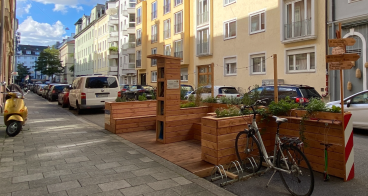Mode-oriented street design: shifting perspectives in urban planning
It is already 6 years ago, I relocated from Canada to the Netherlands to pursue my PhD, and during that time, I had the opportunity to examine Dutch street design from a North American perspective. This article provides insights into the concept of mode-oriented street design and its significance in urban planning, based on an interview with Dick van Veen, a senior consultant at Mobycon, a Dutch-Canadian transportation consulting firm commissioned to produce a report on this subject.
Traditionally, streets have been predominantly designed to accommodate cars. However, a new approach to street design has emerged, challenging the notion that cars should automatically take precedence. The Royal Dutch Touring Club ANWB, in collaboration with Mobycon, released a report that emphasises a mode-oriented approach, where multiple modes of transportation are considered in street design.
Shift in perspective
The report challenges the traditional mindset in urban planning, where cycling and pedestrian infrastructure is often marginalised and relegated to the edges of roadways. Even in areas where cyclists and pedestrians outnumber cars, they are visually treated as secondary users. The objective needs to be the change of this perspective and to advocate for a more inclusive and balanced approach. Clear urban design elements that communicate expected traffic speeds and types to influence driver behaviour can help to strengthen safety and accessibility of more vulnerable transport modes. If speed limit signs are necessary to guide driver behaviour, then there is a failure in design. By tailoring design elements to the human scale and considering the context of low-speed environments, drivers are more likely to behave appropriately.
Integrating modes of transportation
The Netherlands' general approach is to mix traffic and avoid unnecessary separation, except in cases where speeds exceed 30 km/h. The safety of vulnerable road users, such as cyclists and pedestrians, is prioritised. However, the categorisation of vehicles based on their mass and speed is not always straightforward. How to share the roads appropriately amongst motorcycles, racing cyclists, and other emerging modes of transportation, such as skateboards, e-bikes, and Segways, is an ongoing discussion. Urban planning often faces conflicts between the structural classification of a street and the desired design of the environment. For example, some rural cities that initially developed along highways encounter challenges when attempting to create pedestrian-oriented main streets while accommodating significant automobile traffic. Balancing the needs of pedestrians, cyclists, and motorists becomes crucial in such situations.
Changes in urban planning since 2016
Since the original publication of this article in November 2016, urban planning has undergone significant changes. The mode-oriented approach has gained further traction and acceptance worldwide. There has been a growing recognition that streets should be designed to prioritise pedestrians, cyclists, and public spaces, rather than solely focusing on cars. Many cities have implemented measures to create more walkable and bike-friendly environments, emphasising safety, accessibility, and sustainability.
Additionally, technological advancements and evolving transportation options have further shaped urban planning. The integration of e-bikes, scooters, and microcars into transportation systems has become more commonplace. Planners now face the challenge of accommodating these emerging modes while ensuring the safety and efficient movement of all road users.
Mode-oriented street design has emerged as a progressive approach to urban planning, challenging the dominance of cars and promoting inclusive, safe, and sustainable transportation systems. Over the years, there has been a shift in perspective, with increased emphasis on pedestrians, cyclists, and public spaces. As urban planning continues to evolve, adapting to emerging technologies and transportation options will remain a key consideration to create liveable and vibrant cities for all.
As we move forward, it is essential to recognise that the journey towards sustainable urban transportation is still in its early stages in many places. The full realisation of mode-oriented street design and the integration of sustainable transportation options are ongoing processes that will continue to evolve and shape our cities for years to come.
George Liu is lecturer in Urban Mobility Futures at University of Amsterdam / Director of Learning at Urban Cycling Institute.
Published on 19 June 2023.






